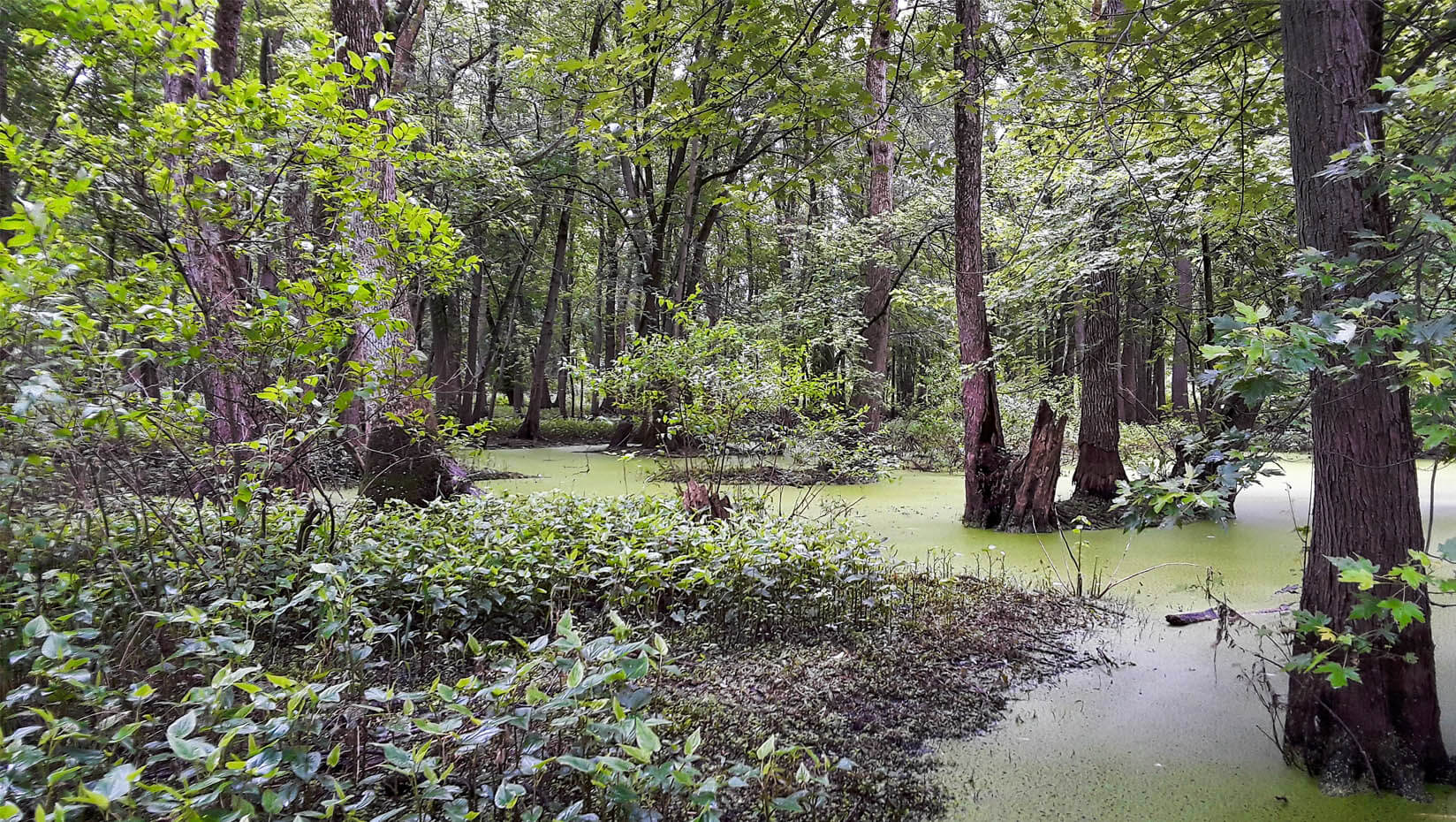
UMaine students’ curriculum design projects highlight past, present of the ‘Everglades of the North’
Two University of Maine undergraduates are designing place-based education materials and K–12 curricula about the Grand Kankakee Marsh in Northern Indiana as part of a National Geographic Society grant.
Mo Weitman and Bell Gellis Morais are working with Katherine Glover, research associate at the Climate Change Institute (CCI) and recipient of a National Geographic Society Early Career Grant, to develop materials that will educate students and teachers about the past and present of an area once referred to as the Everglades of the North.
Weitman and Morais’s curriculum design forms part of the outreach component of Glover’s project, “Biogeography of the Grand Kankakee Marsh, Northern Indiana, U.S. over the past 5,000 years,” which seeks to reconstruct the history of the region and contribute to restoration efforts. The Grand Kankanee Marsh once spanned over 1,000 square miles and was famous for its rich biodiversity before it was irreversibly disturbed by settler resource exploitation, drainage and channelizing in the late 19th century. Today, only about 5% of the original marsh remains.
Weitman, an education and Earth and climate sciences major from Bangor, focused her educational module for high schoolers on glaciers, drawing attention to why they matter and their influence on the land. Indiana has been covered by multiple glaciers in the past; the Last Glacial Maximum led to conditions that eventually formed the Grand Kankakee Marsh. These conditions concluded in a drainage shift, rerouting water from Lake Michigan into the marsh area. Once the drainage shift occurred, the Grand Kankakee Marsh began to retain water faster than the land could remove it.
In Weitman’s lesson plan, students track glaciers’ movements through the land formations left behind; her module invites students to use software like ArcGIS and the CCI’s Climate Reanalyzer to identify landscape features caused by receding glaciers and to make predictions based on climate projections. Through storytelling, the module also illustrates the significance of glacial movement in other senses. As Weitman explains, they leave behind resources for construction.
Morais, a sophomore in psychology and women’s, gender, and sexuality studies, has been working on the region’s more recent history: their module, designed for 6th-7th grade social studies, focuses on how the marsh has changed due to human intervention. Through gallery walks, graphs, maps and the interpretation of historical documents, Morais’ lesson guides students through Native cultures’ stewardship of the land prior to the mid-19th century, when westward expansion under the aegis of Manifest Destiny, and the Indian Removal Act, drove the Miami and Potawatomi from the land. The Civil War, too, played a role, as the frontier was settled.
Land given to speculators was clearcut, and the Kankakee River itself straightened, which had devastating effects on flora and fauna, including the eradication of bison locally. An emphasis of Morais’ lesson plan is the efforts today to restore the Kankakee watershed and mitigate the historical damage that has been done, emphasizing, for example, consultation with local Native American groups.
Morais and Weitman’s teaching modules are being developed to align with Indiana standards for Earth science and environmental studies, National Curriculum Standards for Social Studies, and Next Generation Science Standards. They have been optimized, too, for possible distanced or remote learning. Weitman’s work is accessible via the Science Education Resource Center as part of the “Teach the Earth” portal, managed by the National Association of Geoscience Teachers for the benefit of educators. Bell Morais created theirs using the C3 Teachers inquiry design model, or the College, Career, and Civic Life Framework for Social Studies State Standards. A version of Morais’ lesson can be found here.
Beyond its immediate applicability to local conservation and restoration efforts, Glover sees these educational efforts as important nationally and internationally.
“It’s important to bring awareness to this area,” she says, “but it also points to the complexity of systems. This includes the effects of glacial movement, the impacts of colonization and westward expansion. There’s also work that needs to be done to educate people about the function and benefit of marshes and wetlands more broadly.”
Contact: Brian Jansen, brian.jansen@maine.edu
